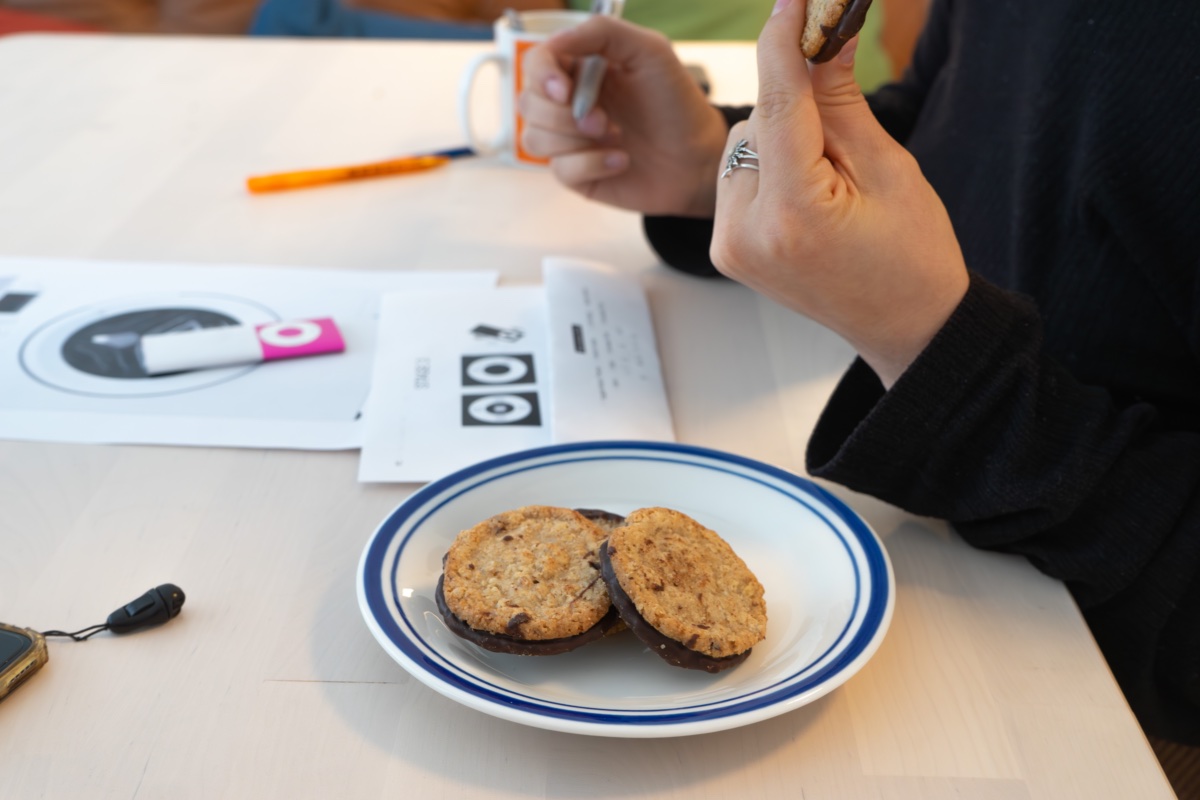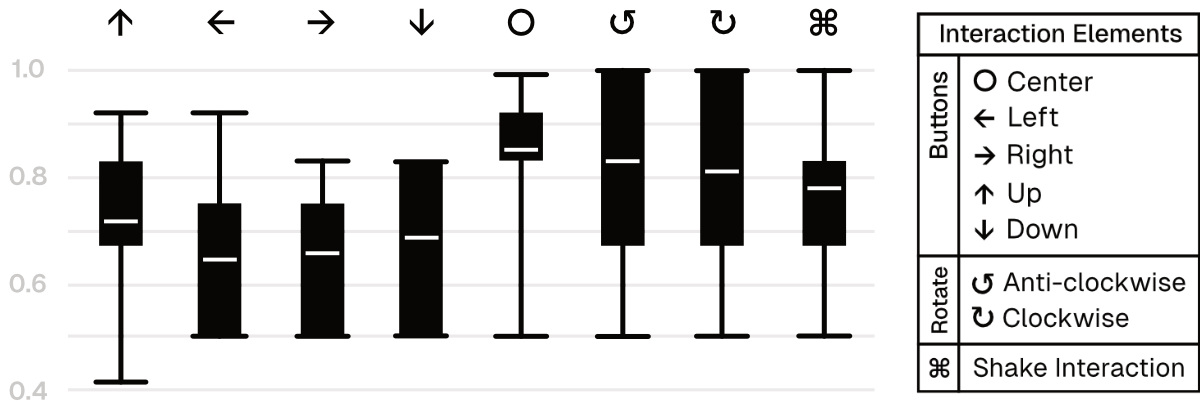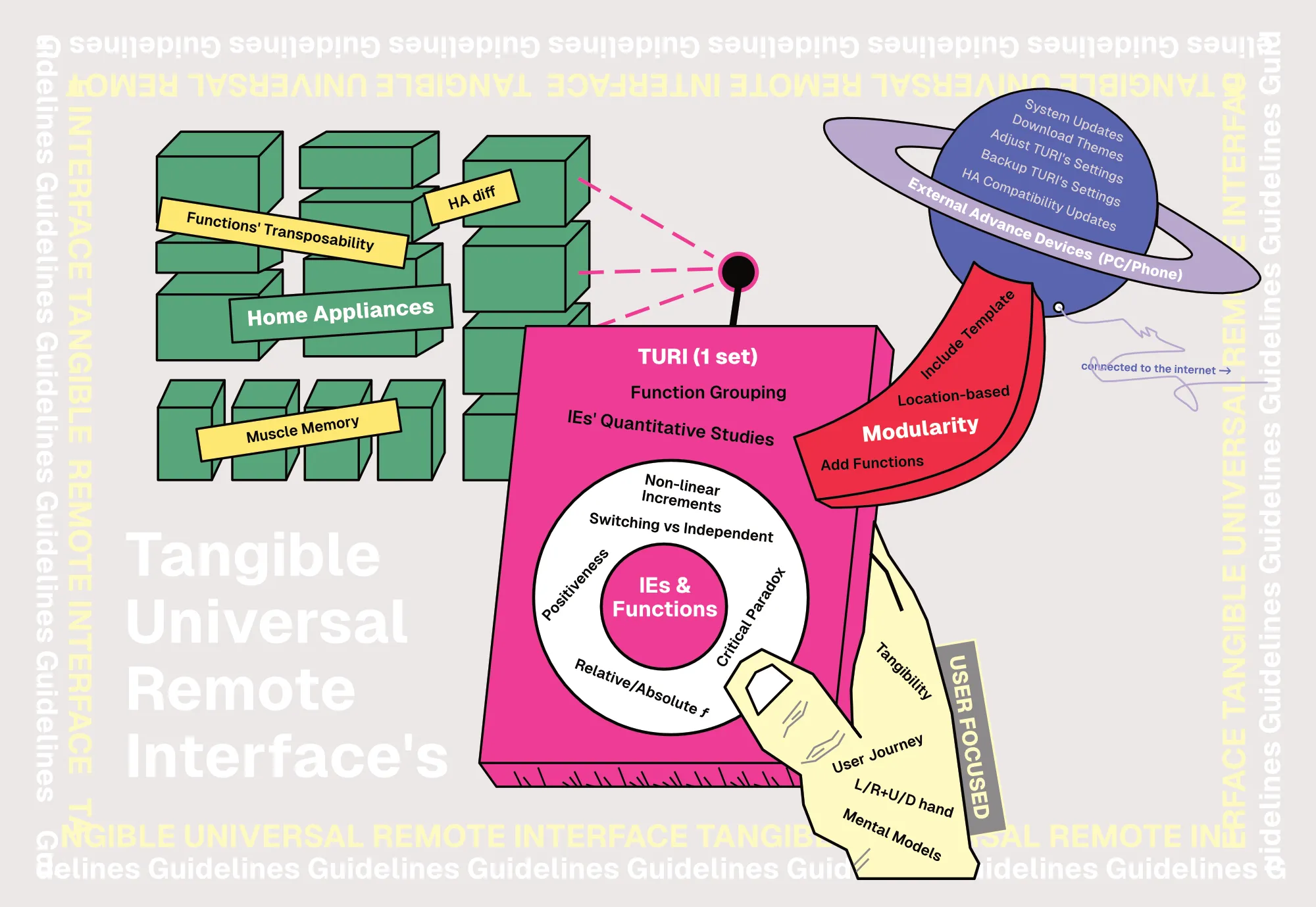My Thesis' Empirical Study
What I learnt and my experience in my HCI&UX master's thesis project on Tangible Universal Remote Interfaces
- 8 Nov 2025
- ⌘
- 7 min read
Table Contents
- 1. Introduction
- 2. Research Question
- 3. The User Study
- 4. Methods
- 4.1 For the Preparation
- 4.2 For the User Study
- 5. Data Analysis
- 5.1 Rules for Grouping Functions
- 5.2 Distribution of functions
- 5.3 Agreement Score on IE
- 5.4 User Journey Logic
- 6. Conclusions
- 6.1 Interaction Remote Oriented
- 6.2 Individual IE & Functions
- 6.3 User Focused
- 6.4 Home Appliances
- 6.5 Remote Modularity
- 6.6 Final Words
- Bonus
I studied a Master’s in Human Computer Interaction and User Experience at Umeå University. And the title of my thesis on that master’s was:
THE WILL TO CLICK ON THE CLICK-WHEEL: An Empirical Study on Users’ Mental Models and Behaviour in Function Assignment on Tangible Universal Remote Interfaces
1. Introduction
What is the significance of this study?
We study the gap between user behaviours and the functions of remote controls, trying to make their use more intuitive and effective.
-
Who is the audience?
The research is useful for designers and scholars in the fields of HCI, with a focus on tangible handheld devices. -
What do we know about it?
Traditional remote controls have not evolved as fast as modern Home Appliances, and current research on remote controls is largely outdated. -
What DON’T we know about it?
We lack recent empirical data on how contemporary users assign functions to remote controls.
2. Research Question
From these previous questions, we come up with the following research question:
How can insights into contemporary user behaviour in function assignment on Tangible Remote Control Interfaces enable designers to create more intuitive and effective designs?
And based on this main question, we introduce another two sub-questions:
- What universal guidelines influence function assignments on a universal remote and what patterns emerge in users’ button assignments?
- How can understanding user patterns and preferences in function assignment on Tangible Remote Control Interfaces help designers?
This study aims to identify user behaviour patterns to design more intuitive remote controls.
3. The User Study
First, there were eight participants from diverse backgrounds, nationalities, age groups, climates, genders, and handedness. Each participant engaged in a one-on-one session with the researcher.

The study’s schedule consists of six sections, three of them being the main study. There was also a questionnaire and a consent form. There were different models of field notes in each stage.

study’s schedule


Here are some pictures taken during the study.
In this study, the participants had to assign functions to each of the 8 Interaction Elements shown here: 5 buttons, a rotation wheel and a shake Interaction element.

TURI’s Interaction Elements
These Interaction Elements were present across the 3 stages of the study.
4. Methods
4.1 For the Preparation
These are the methods used to prepare the study:
- First, a literature review on universal remote controls was conducted to provide context and identify knowledge gaps.
- Secondly, we categorized and classified a wide range of Interaction Elements.
- Thirdly, we analysed a series of existing remote controls to identify common structural patterns and layouts, including traditional remotes, minimalist remotes, remotes for babies, etc.
- This examination revealed a pattern: a central wheel interface was always present, suggesting how important it is in user interaction. Consequently, our prototype should include it as a central element.
- And finally, we conducted a sampling strategy to choose some home appliances for our study.
- We took into account frequency of use, control complexity, and remote interface compatibility. As a result, we selected four key appliances: a washing machine, a door intercom, a fan-light combo, and a microwave oven.

4.2 For the User Study
- Being an Empirical Research, we collected and analysed data to inform design decisions. This approach involves direct observation and experimentation.
- The User Study in Remote Research followed an approach consistent with HCI best practices and user-centred design principles, to explore user interactions and preferences, with direct prototype interaction.
- Prototype testing was essential in this study: we observed direct interactions of participants with specific Interaction Elements.
- And finally, in compliance with the GDPR, all participants signed a consent form.
5. Data Analysis
- First, rules for grouping and categorizing the functions participants assigned.
- Then, all those data were analysed using the Agreement Score of Functions in the same Interaction Element and Correlation Coefficient between different Interaction Elements.
- And we also used Multimodal Field Notes to register participants’ interactions and comments during the study, which consist of written notes, as well as audio and visual recordings.
5.1 Rules for Grouping Functions
Now let us explain the first point more in detail. First, the participants’ raw data, which were functions, were collected. Next, these raw data were categorized into 18 Specific Functions, which were then grouped into 5 General Function categories.

5.2 Distribution of functions
We can see the process and the result in detail in the graph above: 18 specific functions were grouped into these 5 general functions: basic, media, particular, linear and toggle. Different types of functions were utilised for different types of analyses. For example, on the image below, we can easily visualize the distribution of functions assigned to different Interaction Elements.

5.3 Agreement Score on IE
In the next graphic, we can see the similarity of functions assigned to each interaction element. Clearly, the centre button has the most consensus.

5.4 User Journey Logic
Here we can visualize that the user journey logic varies according to different home appliances, although we can identify two primary logics: the distributed and the linear. Moreover, there is a parallel logic for the light-fan combo, which can be further applied in the design of controlling multiple home appliances at the same time.

6. Conclusions
And finally here are the conclusions. To answer our research questions, we drew some guidelines.
How can insights into contemporary user behaviour in function assignment on Tangible Remote Control Interfaces enable designers to create more intuitive and effective designs?
- What universal guidelines and patterns emerge from the assignments?
- How could they help designers create more intuitive and effective remote controls?
Based on all the findings from the study We wrote 17 guidelines. Then, we categorized them into 5 groups
6.1 Interaction Remote Oriented
First are the guidelines oriented to the Interaction Remote’s. For example, when designing an universal remote, consider non-linear increments for finer control at lower fan speeds. It is very important to find out which Interaction Elements correlate, for example, we found out that the Centre button and Shake interaction Element correlate strongly.
6.2 Individual IE & Functions
The second group focuses on the interaction elements and functions individually. Designers need to consider especially the relation between opposite buttons, like Left and Right. Critical functions must be accessible in emergencies, but should be designed so that the user isn’t mis-pressing them.
6.3 User Focused
The third group focuses on users. Designers should take into account various user journey logics, the importance of tangibility. And also differences between right-handed and left-handed users.
6.4 Home Appliances
The fourth group focuses on home appliances. To optimise the user experience, it is advisable to ensure core functions and icons retain similar positions across devices for ease of use.
6.5 Remote Modularity
Finally, the group 5 is related to remote modularity. Designers should incorporate edge-case functionalities and market-specific requirements, such as climatic conditions, to tailor functions and interface layouts accordingly.
Furthermore, the modularity could be enhanced by an external device for extended functionalities to increase the versatility and long-term usage that a tangible universal remote control should have.
6.6 Final Words
To sum up, the main point of this study is to enhance the design of Universal Remote Interfaces, adapting them to users’ behaviours and mental models.
For example, the study found that users instinctively assigned core functions like “Start” or “Turn On” to the central button, reflecting its importance and ease of access. Additionally, participants preferred using the shake interaction element for unique or critical functions such as “Call The Police” or “Do Not Disturb.”

The Guidelines of the TURI
The study also emphasised the need for customisation options to accommodate diverse user preferences, which can significantly improve user satisfaction. For instance, some users liked using rotational controls for precise adjustments, like setting the temperature in a microwave.
All in all, the research provides actionable guidelines for making remote controls more intuitive and user-friendly, thus enhancing the overall user experience across various home appliances.
Bonus
Check my full thesis on Research Gate or Diva.
If you are interested, I have the sequel of this thesis, which was conducted at the same time as this thesis. It is about user-assigned icons on my blog Babylon.